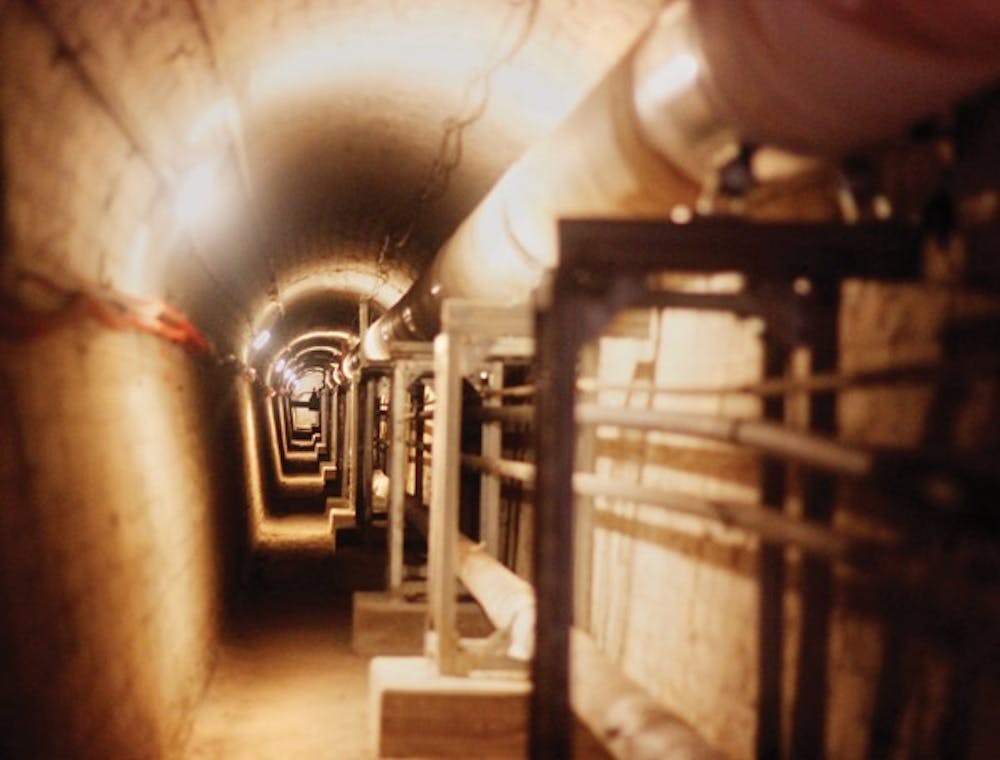Beneath the Surface: Exploring CMU's underground tunnel system
Few students are aware of what it takes to power Central Michigan University's campus day after day. The answer lies beneath us.
Since CMU's earliest days, a labyrinth of underground tunnels has connected a majority of buildings across campus.
There are numerous legends and folklore about what these tunnels have been used for, including some who believe students were once able to use the underground system to navigate their way around the campus during severe weather.
However, John Fernandez emphasized their use as an infrastructure for utility lines.
"They're the arteries of how we transmit energy throughout campus," Fernandez, supervisor of utility operations, said, adding that the tunnels have never been open to students.
Even if they could, the tunnels' narrow and the confined space would make for a difficult voyage. It would also pose a major liability for the university to have students trying to make their way through the dark, dungeon-like environment filled with hot steam pipes, valves and exposed, high-voltage wiring.
The age and condition of the tunnels varies throughout the campus.
The older tunnels near Warriner Hall are narrow with low hanging pipes which makes it an obstacle course to get through. In the newer tunnels, there is freshly paved concrete with the steam pipes and wires are better organized than the tunnels which run under the older buildings.
Jim Waters knows these tunnels like the back of his hand.
As the primary maintenance mechanic responsible for inspecting the tunnels for leaky or broken utility lines, he has spent the majority of his 17-year CMU career underground. Waters is usually fixing pipes or checking on steam lines underground for 10-12 hours a day, and for the majority of the time, he is by himself.
“One time, an albino corn snake popped out from under a bag and tried to bite me,” Waters said. “We have also found some long snake skins that we had looked at that turned out to be rattlesnake skin.”
Brooks Hall houses many different types of reptiles and snakes which have been known to escape from their cages to seek shelter in the tunnels. Although Waters has only encountered one snake and has seen clues of more, the occurrences are few and far between.
For students who feel compelled to enter the tunnels, the consequences for trespassing are taken very seriously by both the university and the CMU Police Department.
Five former students were charged with trespassing misdemeanors for an unauthorized entry in 2011. The students claimed they accidentally found their way into the tunnels after accessing a control switch in an elevator in Wightman Hall.
According to Waters, not only would students who attempt to enter the tunnels be prosecuted in court, they could also face suspension and possible expulsion by the university.
“That’s where all my energy goes out; it starts with the tunnel,” Director of Energy and Utilities Mike Walton said. “If I lose the tunnels, it’s no different than shutting the power off.”
https://vimeo.com/80029957




